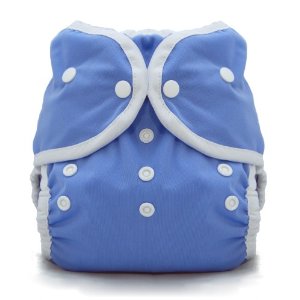Natalie Wallace is a Jamaican high school Mathematics and Science teacher with a background in Environmental Science which she formally studied for 2 years. She believes in living well with the environment and is a strong advocate for volunteerism.
Our world today is filled with various gadgets and shortcuts all aimed at making life easier. We want to get through our busy schedules as quickly and efficiently as possible, fitting in what seems to be a vast number of tasks in a ‘short’ 24 hour period.
With all the pressures of our fast paced world, becoming a mother and needing to fit in even more chores can seem overwhelming. An unfortunate result of this can be choices that, while they may seem better at the time, are less healthy or more costly for us as a global community in the long run.
One such choice that new parents need to make is how they will be diapering their babies. The most convenient choice may seem to be disposables, but if we take the time to understand the negative effects such a choice may have on our environment, we may reconsider.
Consider for instance the numerous landfills around the world filled with acres of used disposable nappies (diapers) which will remain there for hundreds of years before beginning to disintegrate. And unfortunately that is only the tip of the iceberg, when it comes to the effects on the environment of disposable nappies. (See our article on modern cloth nappies for more information on this.)
Since many mothers have only a short period of maternity leave before returning to work, and even those who stay at home often need to be in and out with their baby, disposable nappies may seem to be the only choice available at a first glance, but there are other choices out there.
Using modern cloth nappies is a real option, and possibly the best one if considering environmental effects, but many mothers worry about leaking problems and slightly embarrassing situations which may result from the use of cotton nappies.

In weighing the pros and cons of your choices, consider that many modern nappies are lined with PUL fabric (Polyurethane Laminated fabric).
PUL is a waterproof backing that was originally used in the medical field where waterproof material which could be sterilized and ready for reuse was needed. Its uses have evolved to include the manufacture of a variety of modern nappies and nappy covers which largely solved the leaking problems associated with older style cloth nappies.
PUL backed cloth nappies are washable, can be sterilized and are extremely durable since a single set can easily outlast two children. The PUL material can even be replaced in some cases, and the nappy will once again be as efficient as it was when new.
These nappies can even be homemade, by using the PUL material outside and absorbent inner fabric, or they can be purchased from baby stores worldwide. Many use soft organic cotton, hemp or bamboo next to the baby’s skin.
Alternatively, you may choose to purchase regular cloth nappies or fitted cloth nappies without the waterproof layer and buy PUL fabric nappy covers to be worn over them.
PUL is a non-biodegradable material, but the material is so leak proof that a thickness of only one or two millimetres is needed for nappies to make them work perfectly and be quite comfortable.
Although like disposables your PUL covers will not break down in landfill, using PUL nappies or nappy covers is a far, far lesser evil. A set of 24 cloth nappies will do the work of thousands of disposable nappies over time.



